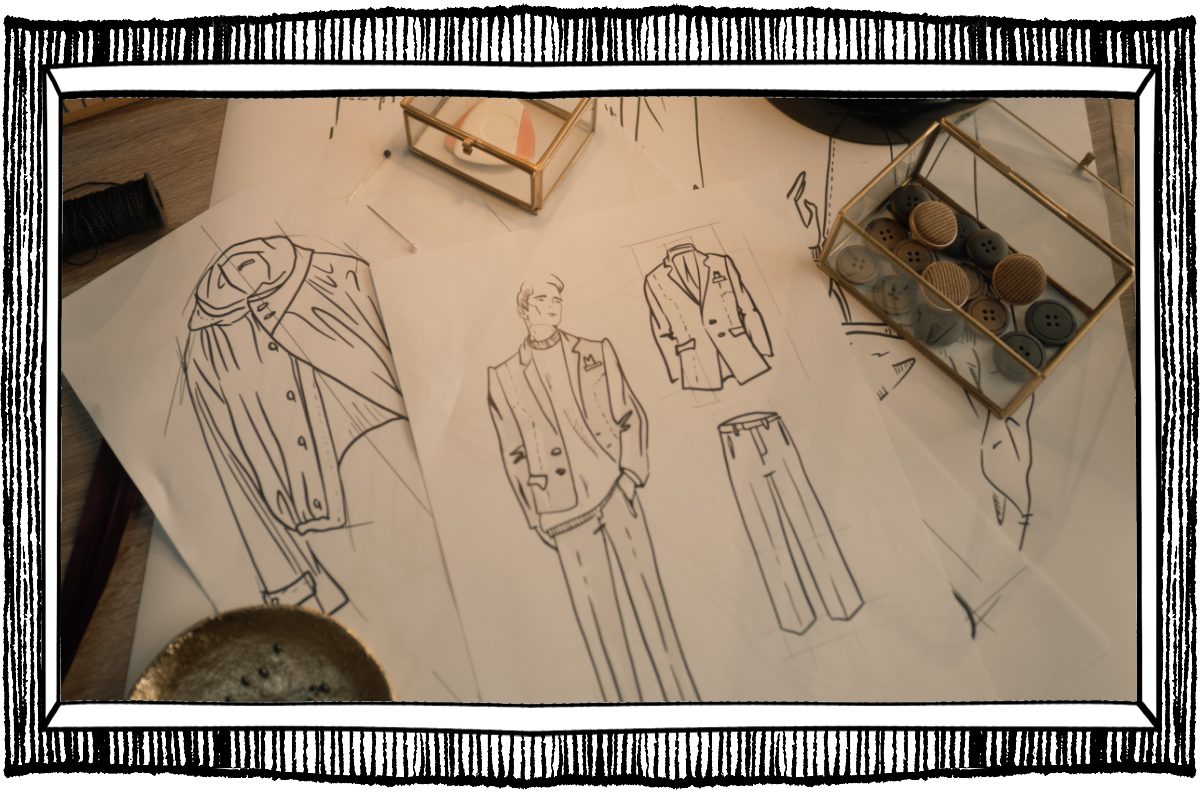Looking into the heritage of sartorial style through the ages, you can see that it comes into its own in our contemporary era. Because these days, clothing is no longer a matter of social class, but of class full stop. Sartorial style comes forth in a multitude of outfits, from patterned casual wear to evening wear. It’s an advantage of living in our time to be able to constantly make adjustments in the name of the eternal men’s elegance.
Sartorialism: a fusion of styles and cultures
You won’t hear about sartorial style in every country. It’s important not to get traditional local dress, like in the Middle East and India, mixed up with the traditional men’s wardrobe that transcends borders as far afield as Japan and the United States.
The Japanese, who execute both perfectly well, reflect excellence in the skill behind their classic, pared-down lines, yet ultra-modern cuts and fabrics.
Americans will always combine style and work, and will never go without a denim piece to top off their sartorial look.
As for the Europeans, the very source of sartorial style, they will always be at the forefront of good taste and timeless collections. With no poor pun intended, can we say that they serve as a yardstick for the entire community?
To understand what the essence of a cut is, let us peddle the writings of Julien Scavini, a master tailor based in rue de la Tour-Maubourg in the 7th arrondissement of Paris.
The English cut of a suit
You’re about to find out, at long last, why “My tailor is rich”.
Because the codes of the English suit are a legacy from the aristocracy, who were capable of horse riding or playing sport in a tweed suit and then going off to take tea. Sporty, comfortable lines, yet encouraging a head held high and an ample torso.
Here’s a description of a tailored jacket:
- Despite the use of padding, the shoulders are not overly structured.
- With a high neckline letting the tie knot or bow tie show.
- The step lapel is open.
- The waist is fitted, but moderately cinched in.
- The back of the jacket has 2 slits, providing a little comfort in the fit.
- The pockets are generally straight and flat, for an understated look.
The English love braces, an accessory that’s making a comeback. Go for fishtail trousers that are comfortable to wear, hug the waist and are not too tight in the legs, for a more comfortable look.
The French suit cut
This is a very fitted cut, and particularly intricate and detailed. A work of excellence, intended to be the worldwide benchmark, as if to demonstrate France’s reputation in the field of made-to-measure clothing. It’s all about the winning look.
How do you spot a French-style cut?
- The shoulders are narrow.
- The top of the sleeve is puffed out: this is the technique for joining the sleeve to the shoulder. It’s a French peculiarity that’s difficult to execute.
- The jacket is very fitted with quite a high, pronounced waistline.
- The lapel is placed to partly hide the tie.
- The jacket has just one slit at the back.
To fit with this refined jacket, go for trousers with dual pleats. Or better still, since they’re a rare thing in men’s ready-to-wear, Gurkha-cut trousers, with a belt made from two intertwining straps. You’d almost think you were wearing a tuxedo in the daytime.
Which are the best men’s suit workshops in Paris?
The Italian style cut
We know that the Neapolitans excel in the art of tailoring. They are the spiritual fathers of contemporary sartorialism.
What does the infamous Italian-style cut involve?
- The garment is more loose-fitting, more floaty (whereas you’d think it would be more fitted than a French cut, but it isn’t).
- The waist is low.
- The pockets and buttons are low, too.
- The step lapel is small. The idea is to show off one’s chest.
- The Neapolitan shoulder is a sewing technique that gives the sleeve the look of a shirt sleeve.
That clearly points to Italian style. To be paired with dual-pleat, single-pleat or standard trousers.
The American-style cut
When it comes to Americans, there is no bespoke tailoring or evensartorial arts to speak of. When it comes to cuts, it’s the simplest one possible. Perhaps for it to be worn while working in any sector, since it originated in the 1900s, the era of industrialisation. American men are practical and fashionable, but not necessarily elegant. Which they became after importing Italian standards.
What does that look like?
- A jacket with a “sack suit” cut. “Sack” as in potato sack. Which means…
- No pleats.
- No fitted waist.
- An unstructured, sloping shoulder.
Avoiding fitted trousers, preferring the standard or fishtail cut. If you like this style of jacket, you’ll need to cut it fromvery good quality fabric that’s stiff enough to give it hold. Collared jumpers are recommended.
Where does that leave the Japanese?
The Japanese are the new ambassadors of sartorialism. A deep-seated sartorial persuasion is what makes them tick.
Their entire culture is geared around refinement and upholding high standards. Their handiwork is among the finest and most beautiful.
It’s not bespoke clothing, but the great return to traditional fabric making that shows their true colours.
It’s well known that Japan got by on its textile industry for a long time, by spinning silk.
Today, they excel at cotton-weaving, testing out innovative approaches with linen and hemp. Their fabrics are of excellent quality, as they are very fine and tightly woven.
The Japanese brought us colours, thanks to their great skill in dyeing: their colourful motifs are very popular. Geometric, inspired by nature or objects (like samehada, inspired by shark skin, or sensu, inspired by fans), they encourage the emergence of sartorialism for women.
To help you choose a made-to-measure women’s suit, it’s important to follow a few pieces of advice. But how do you spot a good tailor?
A new sartorial era is upon us
Had men’s elegance vanished? It’s coming back to us by way of every country. More accessible, more unabashed, brazen even, in every environment. Women’s elegance is also developing with the art of bespoke tailoring for women in Paris
Go for a thing of beauty, pull off your sartorial style, become one to remember.

